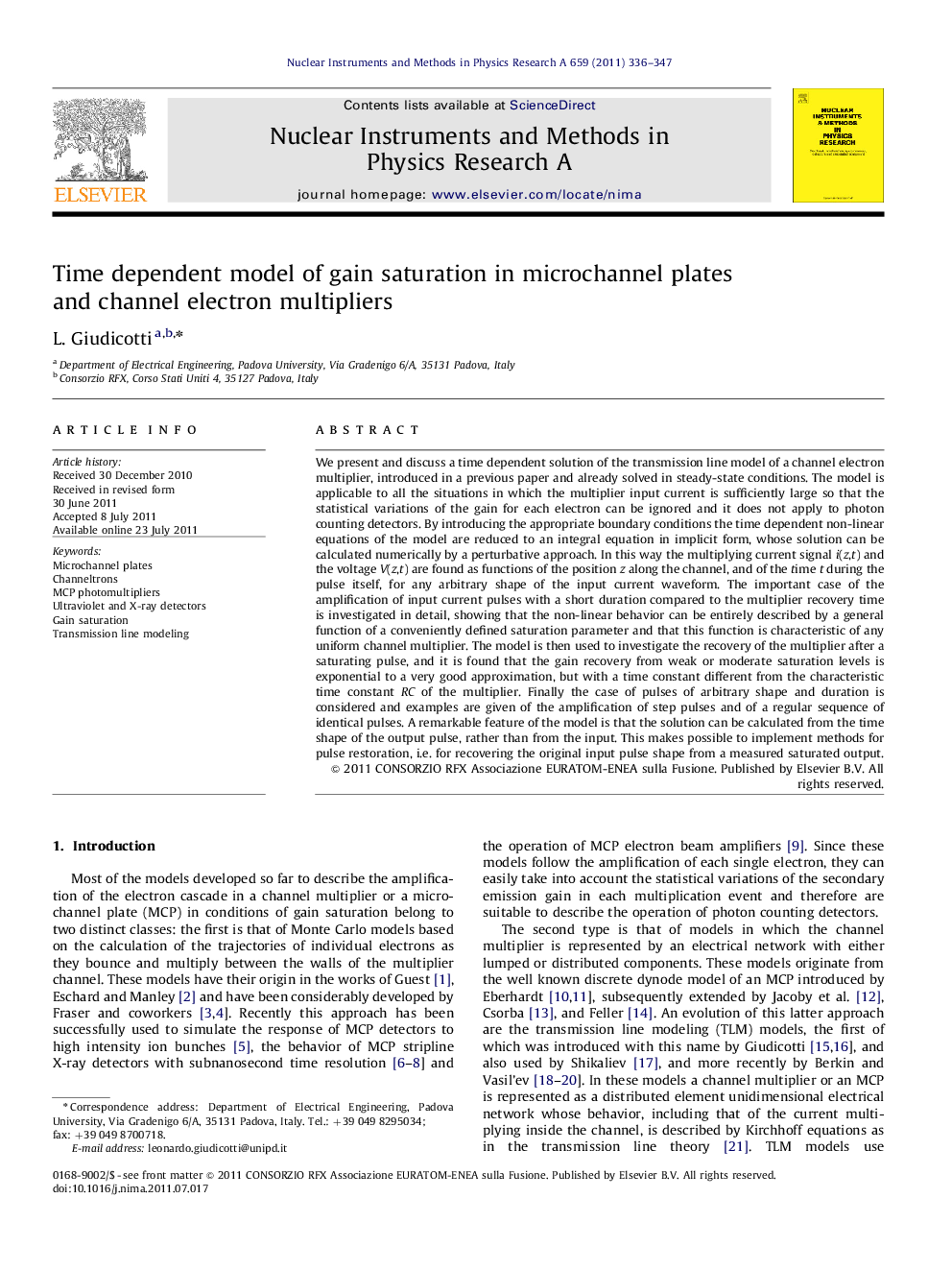| کد مقاله | کد نشریه | سال انتشار | مقاله انگلیسی | نسخه تمام متن |
|---|---|---|---|---|
| 10715616 | 1027328 | 2011 | 12 صفحه PDF | دانلود رایگان |
عنوان انگلیسی مقاله ISI
Time dependent model of gain saturation in microchannel plates and channel electron multipliers
دانلود مقاله + سفارش ترجمه
دانلود مقاله ISI انگلیسی
رایگان برای ایرانیان
کلمات کلیدی
موضوعات مرتبط
مهندسی و علوم پایه
فیزیک و نجوم
ابزار دقیق
پیش نمایش صفحه اول مقاله

چکیده انگلیسی
We present and discuss a time dependent solution of the transmission line model of a channel electron multiplier, introduced in a previous paper and already solved in steady-state conditions. The model is applicable to all the situations in which the multiplier input current is sufficiently large so that the statistical variations of the gain for each electron can be ignored and it does not apply to photon counting detectors. By introducing the appropriate boundary conditions the time dependent non-linear equations of the model are reduced to an integral equation in implicit form, whose solution can be calculated numerically by a perturbative approach. In this way the multiplying current signal i(z,t) and the voltage V(z,t) are found as functions of the position z along the channel, and of the time t during the pulse itself, for any arbitrary shape of the input current waveform. The important case of the amplification of input current pulses with a short duration compared to the multiplier recovery time is investigated in detail, showing that the non-linear behavior can be entirely described by a general function of a conveniently defined saturation parameter and that this function is characteristic of any uniform channel multiplier. The model is then used to investigate the recovery of the multiplier after a saturating pulse, and it is found that the gain recovery from weak or moderate saturation levels is exponential to a very good approximation, but with a time constant different from the characteristic time constant RC of the multiplier. Finally the case of pulses of arbitrary shape and duration is considered and examples are given of the amplification of step pulses and of a regular sequence of identical pulses. A remarkable feature of the model is that the solution can be calculated from the time shape of the output pulse, rather than from the input. This makes possible to implement methods for pulse restoration, i.e. for recovering the original input pulse shape from a measured saturated output.
ناشر
Database: Elsevier - ScienceDirect (ساینس دایرکت)
Journal: Nuclear Instruments and Methods in Physics Research Section A: Accelerators, Spectrometers, Detectors and Associated Equipment - Volume 659, Issue 1, 11 December 2011, Pages 336-347
Journal: Nuclear Instruments and Methods in Physics Research Section A: Accelerators, Spectrometers, Detectors and Associated Equipment - Volume 659, Issue 1, 11 December 2011, Pages 336-347
نویسندگان
L. Giudicotti,